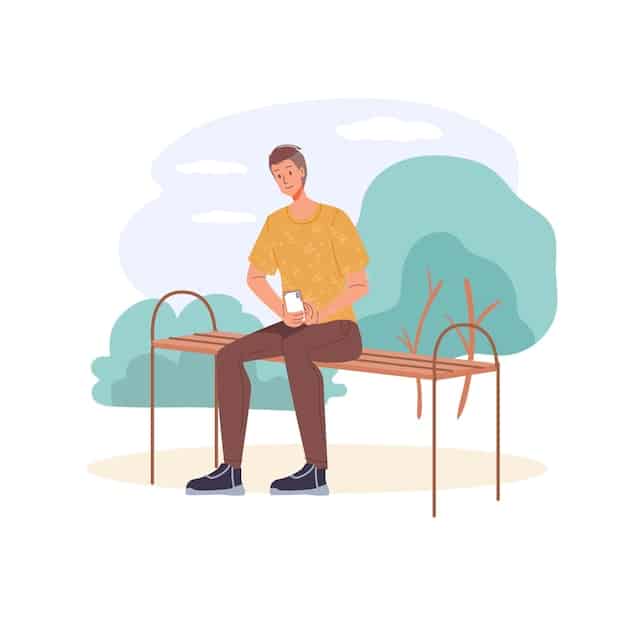Recognizing Depression in Men: A Comprehensive Guide

Recognizing and Addressing the Signs of Depression in Men: A Comprehensive Guide is crucial for early intervention and support. This guide provides insights into the unique symptoms men may experience and offers strategies for seeking help and fostering mental well-being.
Depression is a serious mental health condition that affects millions worldwide. While it can impact anyone, men often experience it differently than women. Recognizing and Addressing the Signs of Depression in Men: A Comprehensive Guide is essential because societal expectations and traditional gender roles can make it harder for men to acknowledge and seek help for their struggles.
This guide aims to shed light on the unique ways depression manifests in men, offering practical advice and resources for those who may be struggling, as well as for their loved ones seeking to provide support. Understanding these nuances is the first step in recognizing and addressing the signs of depression in men: a comprehensive guide to mental well-being.
Recognizing the Unique Signs of Depression in Men
Depression doesn’t always look the same for everyone. Men, in particular, may exhibit symptoms that differ from what’s typically associated with depression. Therefore Recognizing and Addressing the Signs of Depression in Men: A Comprehensive Guide starts with understanding these unique signs.
Common, yet Overlooked Symptoms
While sadness is a well-known symptom, men are more likely to show anger, irritability, or reckless behavior. These manifestations often mask the underlying depression.
- Increased Irritability: A short temper and easily triggered frustration can be a significant indicator.
- Loss of Interest: Men may withdraw from hobbies, sports, or social activities they once enjoyed.
- Physical Symptoms: Headaches, digestive problems, and chronic pain without a clear cause can be linked to depression.
- Reckless Behavior: Engaging in risky activities like excessive drinking, drug use, or gambling may be a coping mechanism.

Understanding these less obvious symptoms is crucial in recognizing and addressing the signs of depression in men: a comprehensive guide to identifying the problem early.
The Role of Societal Expectations
Societal expectations play a significant role in how men experience and express depression. Traditional masculinity often discourages men from showing vulnerability or seeking help because Recognizing and Addressing the Signs of Depression in Men: A Comprehensive Guide requires overcoming these stereotypes.
The Stigma of Mental Health
Many men fear being seen as weak or inadequate if they admit to struggling with depression. This stigma can prevent them from seeking the support they need.
Internalized beliefs such as “men should be strong” or “men should handle things on their own” can create barriers to seeking help recognizing and addressing the signs of depression in men: a comprehensive guide requires challenging this stigma, promoting the idea that seeking help is a sign of strength, not weakness.
Effective Strategies for Addressing Depression
If you suspect you or someone you know is struggling with depression, there are several effective strategies for addressing it. These approaches include seeking professional help, lifestyle changes, and building a strong support system.
Seeking Professional Help
Therapy, medication, and other forms of treatment can be highly effective in managing depression. Cognitive-behavioral therapy (CBT) and interpersonal therapy (IPT) are two common approaches.
- Cognitive-Behavioral Therapy (CBT): Helps men identify and change negative thought patterns and behaviors.
- Medication: Antidepressants can help regulate mood and alleviate symptoms. It is important to consult with a healthcare professional to determine the best course of treatment.
- Support Groups: Connecting with others who understand what you’re going through can provide a sense of community and reduce feelings of isolation.
Lifestyle Changes
Incorporating healthy habits into your daily routine can also make a significant difference in managing depression and Recognizing and Addressing the Signs of Depression in Men: A Comprehensive Guide encourages the use of these strategies.
Regular exercise, a balanced diet, and adequate sleep can have a positive impact on mood and overall well-being. Avoiding alcohol and drugs is also crucial, as they can worsen symptoms of depression.
Building a Strong Support System
Having a strong support system is vital for men struggling with depression. This includes family, friends, and other trusted individuals who can provide emotional support and encouragement.
The Importance of Open Communication
Men need to feel comfortable talking about their feelings and experiences with loved ones. Open and honest communication can help reduce feelings of isolation and create a sense of connection.
Loved ones can play a crucial role by listening without judgment, offering support, and encouraging men to seek professional help. Recognizing and Addressing the Signs of Depression in Men: A Comprehensive Guide also involves educating yourself on how to best support others.

Overcoming Barriers to Treatment
Despite the availability of effective treatments, many men face barriers to accessing mental health care. These barriers may include financial constraints, lack of access to services, and concerns about confidentiality.
Accessing Affordable Care
There are numerous resources available to help men access affordable mental health care. These include community mental health centers, sliding scale clinics, and online therapy platforms.
It is important to research and explore different options to find a treatment plan that is both effective and affordable. Recognizing and Addressing the Signs of Depression in Men: A Comprehensive Guide includes advocating for better mental health services.
Promoting Mental Wellness in the Workplace
The workplace can be a significant source of stress and pressure for men. Promoting mental wellness in the workplace is crucial for creating a supportive and healthy environment.
Creating a Supportive Environment
Employers can take steps to promote mental wellness by offering mental health resources, providing flexible work arrangements, and encouraging open communication about mental health. They can start with Recognizing and Addressing the Signs of Depression in Men: A Comprehensive Guide.
Creating a culture of understanding and acceptance can help reduce stigma and encourage men to seek help when they need it. Awareness campaigns and training programs can educate employees about depression and other mental health conditions, recognizing and addressing the signs of depression in men: a comprehensive guide to fostering a supportive workplace culture.
| Key Point | Brief Description |
|---|---|
| 💡 Unique Symptoms | Men may show anger, irritability, or reckless behavior as signs of depression. |
| 💪 Seeking Help | Therapy and medication can be effective treatments; challenging the stigma is essential. |
| 🤝 Support System | Family and friends provide crucial emotional support and encouragement. |
| 🏢 Workplace Wellness | Supportive environments and resources promote mental well-being among men. |
Frequently Asked Questions (FAQ)
Commonly overlooked signs include increased irritability, loss of interest in hobbies, physical symptoms like headaches, and engaging in reckless behaviors. Recognizing and Addressing the Signs of Depression in Men: A Comprehensive Guide includes being aware of these.
Men often struggle due to societal expectations and the stigma surrounding mental health. They may fear being seen as weak or inadequate if they admit to struggling and seek help.
Effective strategies include seeking professional help through therapy or medication, making positive lifestyle changes like exercising regularly, and building a strong support system with loved ones.
You can support them by listening without judgment, encouraging them to seek professional help, and offering emotional support and understanding. You can also educate yourself for Recognizing and Addressing the Signs of Depression in Men: A Comprehensive Guide.
Many resources are available, including community mental health centers, sliding scale clinics, online therapy platforms, and support groups. Researching and exploring different options can help find an affordable and effective plan.
Conclusion
Recognizing and Addressing the Signs of Depression in Men: A Comprehensive Guide is an important step towards breaking down stigma. By understanding the unique ways depression manifests in men and promoting open communication, we can encourage more men to seek help when they need it. Creating a more supportive and understanding environment for men’s mental health is crucial for their well-being and success.





